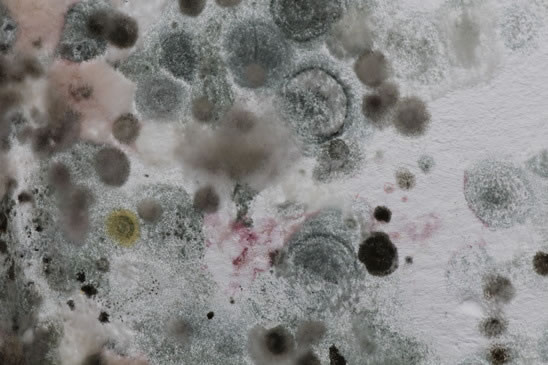Jeff Howell talks to Paul Morris of Abbey Indendent Surveys to get the best advice when tackling persistent mould problems in the home.
At a recent meeting, one of our Surveyors complained about the amount of time he has to spend dealing with the everyday problems of condensation and black spot mould. This does seem a bit unfair, as other colleagues were talking about interesting surveys on churches and historic buildings, and even jetting off for some continental clients.
This particular Surveyor had been tasked with multiple investigations, mainly in social housing, either still under Local Authority control or as rented stock in the private sector. Older buildings with solid walls, depending on location, will have issues with internal wall temperatures at or below dewpoint. One of my own recent surveys recorded an internal wall temperature of 3.5C (with the ambient air temperature at 8.1C in the bedroom). Calculation showed a dewpoint temperature of 5.7C, so condensation was forming, and streaming down the walls as I watched.
Adding Insulation
Many landlords attempt to fix the problem by adding insulation, and/or very basic extractor fans. “Adding insulation” often seems to consist of sticking sheets of plasterboard to walls with plaster dabs. This assumes the plasterboard will warm up the surface (and therefore raise the dewpoint – end of problem). Unfortunately it only moves the dewpoint behind the insulation, to the original wall surface.
Dry Lining
Dry-lining certainly has a role to play, although one has to be mindful of the environmental conditions and equilibrium of each property. The subjects of vapour pressure, relative humidity and interstitial condensation are complex and far-reaching, therefore best left for another day and a wider technical discussion.
Health Claims
The attached photograph (above) is a genuine property that tenants had moved out of the previous day. Apparently, they moved out because “the house” had caused their coughs and their children’s asthma, and damaged all their clothes, bedding and curtains. Of course there was now a potential claim for compensation, backed up by a letter from a health professional, who had never visited the property! Never mind that the central heating was never used (due to fuel poverty), four non-working adults all smoked, there were two tumble dryers in the kitchen (not vented), clothes drying on a clothes horse in front of a portable calor gas heater, and no mechanical extraction from a centrally located (no window) well-used shower room.
This is of course an extreme example, but things are no less distressing for the more conscientious family who finds black spot mould growing in the upper corners of their third bedroom, or behind the wardrobes and sofa.
The mould problem
Adding more insulation – because some lobbying group has convinced the Government this is the right way – installing an extractor fan so weak that it is unable to support a piece of tissue paper when it is running, or telling people not to dry clothes indoors (when they live on the seventh floor) only drains the budget and ticks boxes. Although all these issues can and do have some effect, from experience the greatest improvements can be achieved by increasing background heat. Fuel poverty is often the real problem.
The family that used two portable calor gas heaters, because they felt unable to afford the gas central heating, were not only paying at least twice the amount for their heat, but were producing additional air-borne moisture to add to their woes. If I recall correctly, Calor Gas in the blue bottles (butane), produces five litres of water for every one litre of gas burnt.
In any case, just pumping more heat into the air is costly and inefficient, as the higher the air temperature, the more moisture it can hold – waiting to condense out onto cool surfaces. Warming the walls is better, but on its own will only move the problem to other cool surfaces. Likewise, mechanical extraction on its own will fail – most extractor fans seem fitted to run-on after the light goes out, even though the humidity might still be 100%, so the bathroom door is left ajar “to clear the steam”.
Is there a mould solution?
So, although each supplier, salesman or lobbyist offers an individual “wonder cure”, in reality a careful balance is required, specific to an individual property. This can only be achieved by a proper time-consuming technical survey, taking into consideration the design, use and what can realistically be achieved to create the greatest improvement as cost-effectively as possible.
For our own part, we run the central heating in our office 24/7 during the winter months, albeit with the boiler temperature turned down. A powerful yet silent in-line heat recovery extraction system, solid brick walls built and pointed with soft and breathable lime mortar, and double glazing with trickle vents permanently open. The result is that that the walls act as a large radiator, absorbing heat from the inside in winter and outside in the summer. Accordingly, the internal surface of the walls is never lower than 14.7C, with a mean average air temperature of 19.5C, giving a comfortable condensation-free and mould-free environment.
Just one problem, I’ve now got to tell our disheartened Surveyor I’ve accepted a commission to inspect a Villa in Portugal – but luckily it’s a two man job!





